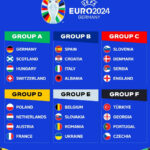The euro is the official currency for a significant portion of Europe, simplifying travel and trade across numerous countries. Understanding where you can use the euro is essential for travelers and anyone conducting business within Europe. This article breaks down exactly where the euro is accepted, from its official eurozone countries to territories and nations where it’s used by agreement or as a de facto currency.
Eurozone Countries: Officially Adopting the Euro
The most prominent area where the euro is used is within the eurozone. This comprises 20 member states of the European Union that have adopted the euro as their national currency. These countries are:
- Austria
- Belgium
- Croatia
- Cyprus
- Estonia
- Finland
- France
- Germany
- Greece
- Ireland
- Italy
- Latvia
- Lithuania
- Luxembourg
- Malta
- Netherlands
- Portugal
- Slovakia
- Slovenia
- Spain
In these nations, you can use euro banknotes and coins for all transactions, making it seamless to travel between these destinations without currency exchange within the eurozone.
European Territories Utilizing the Euro
Beyond the mainland countries, the euro extends its reach to various overseas territories associated with eurozone members. These territories also officially use the euro, expanding the geographical area where the currency is accepted. This includes locations such as:
- The Azores and Madeira (Portugal)
- The Canary Islands, Ceuta, and Melilla (Spain)
- French Guiana, Guadeloupe, Martinique, Mayotte, Réunion, Saint Barthélemy, and Saint Pierre and Miquelon (France)
When traveling to these territories, you can expect to use the euro just as you would in mainland Europe, offering convenience and consistency in your financial transactions.
Microstates with Formal Euro Agreements
Interestingly, the euro is also the official currency of several European microstates, not through EU membership, but through formal agreements. These independent states have adopted the euro to simplify their monetary systems and align with European economic standards. The microstates that officially use the euro are:
- Andorra
- Monaco
- San Marino
- Vatican City
These agreements highlight the euro’s widespread acceptance and its role as a stable and recognized currency even outside the formal EU framework.
De Facto Euro Usage
In addition to official and agreed usage, the euro is also used as a de facto currency in some regions. This means that while not officially adopted, the euro is widely accepted and used for most transactions, often due to economic ties or practical convenience. Notable examples of de facto euro usage include:
- Kosovo
- Montenegro
In these areas, while other currencies might be technically legal tender, the euro is so widely used in daily life that it functions as the primary currency for most people and businesses.
Conclusion: The Widespread Reach of the Euro
In summary, the euro is used across a broad geographical area encompassing 20 EU member states, numerous European territories, several microstates through agreements, and even as a de facto currency in certain regions. This widespread adoption makes the euro a significant global currency and simplifies financial interactions for millions of people across Europe and beyond. For travelers and businesses alike, understanding where the euro is used is key to navigating the European economic landscape.

